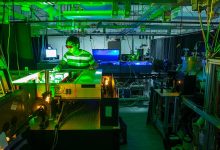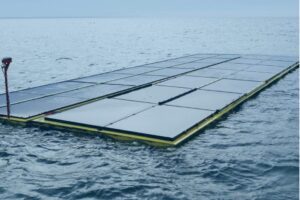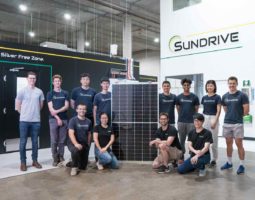Australian research into new clean energy technologies is set to receive a boost, with leading universities and solar research institutions sharing in more than $20 million in new funding to accelerate the development of new solar and agricultural innovations.
Four Australian research institutions will jointly share in $19 million of new solar research funding, awarded to the Australian Centre for Advanced Photovoltaics to fund the continued development of innovations in solar photovoltaic technologies.
Eight new projects will be supported by the funding, to be undertaken by researchers across the University of Melbourne, Monash University, the Australian National University and at UNSW Sydney.
The projects will examine and identify new materials for use in next-generation solar panels, improvements in solar photovoltaic conversion efficiencies, and improvements in the production processes of solar panels and solar fuels.
UNSW, which is host to the Australian Centre for Advance Photovoltaics, has been a global leader in solar photovoltaic research for decades, and its innovations are widely used throughout the solar industry. It expects the new funding to help maintain that leadership position.
“For over 40 years, Australia has led the world in solar innovation. These investments will establish world-class, one-of-a-kind facilities in Australia and will help maintain our leadership in solar research and technology development,” UNSW’s professor Renate Egan said in a statement.
UNSW will receive funding to support research into new highly efficient tandem solar cells, being lead by scientia associate professor Xiaojing Hao, who was recently awarded the 2020 Malcolm McIntosh Prize for Physical Scientist of the Year, as part the PM’s science prizes.
Additional funding has been provided towards the establishment of a new ‘climate chamber’, which will allow researchers to simulate real-world conditions to identify how harsh environments can lead solar technologies to fail.
“This world-first climate chamber with an integrated full-area solar simulator will make testing solar PV modules for known and emerging failure modes possible, while measuring their power output. These capabilities are critical for developing robust solar panels, and other applications,” UNSW professor Bram Hoex said.
“The system can reach temperatures well over 120 degrees Celsius, with a relative humidity of 90 per cent, and voltages of up to 1500 V, which will significantly quicken the identification of failure modes. This will be the first system anywhere in the world to test industry-sized modules under these conditions, while concurrently monitoring their performance.”
As part of the funding commitment, $4.5 million will be provided to Monash University to establish a new material processing facility and research projects. Monash University expects that the new facility will enable the fabrication of new materials with the potential to accelerate the development of new solar energy and battery storage technologies.
Monash University’s professor Udo Bach, will lead the research team that will take advantage of the new facility and which is is based at the ARC Centre of Excellence in Exciton Science.
“This facility will dramatically increase the rate of discovery in the energy materials space as Australia, and indeed other countries globally, prioritise a reduction in carbon emissions and a transition to sustainable energy sources,” professor Bach said.
“The new facility will be able to run autonomously for 24 hours, continuously making and characterising thin film coatings. This will allow future users to speed up their experimental throughput by at least 100 times compared to conventional research practices. Ongoing research into perovskites will be a major focus,” Bach added.
The ARC Centre recently published research demonstrating the potential for new artificial intelligence algorithms to identify and assess new materials for use in next-generation solar energy technologies.
“Monash is a world leader in energy science and engineering. This facility will dramatically increase the rate of discovery in the energy materials space as Australia, and indeed other countries globally, prioritise a reduction in carbon emissions and a transition to sustainable energy sources,” professor Bach added.
In a separate funding announcement, the Australia-India Strategic Research Fund has also awarded a further $2.5 million in funding to a number of research projects that will see Australian and Indian research institutional cooperate in clean energy and climate adaptation research.
Through the research partnerships, the University of South Australia will develop new food processing and drying systems that use solar energy. The University of Southern Queensland will examine climate adaptation systems for farmers, and the University of Technology Sydney will receiving funding to develop a brine treatment process also using solar energy.










